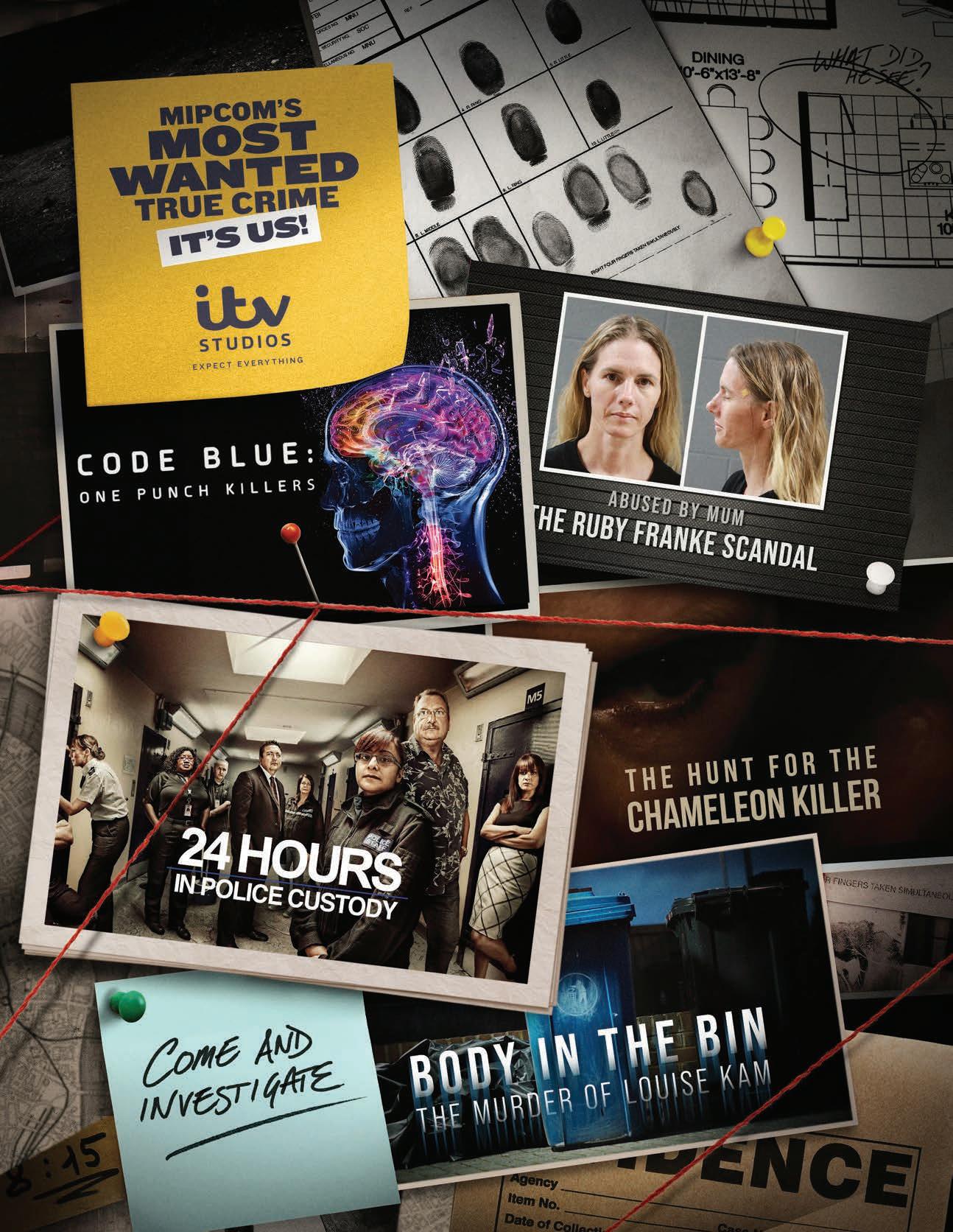
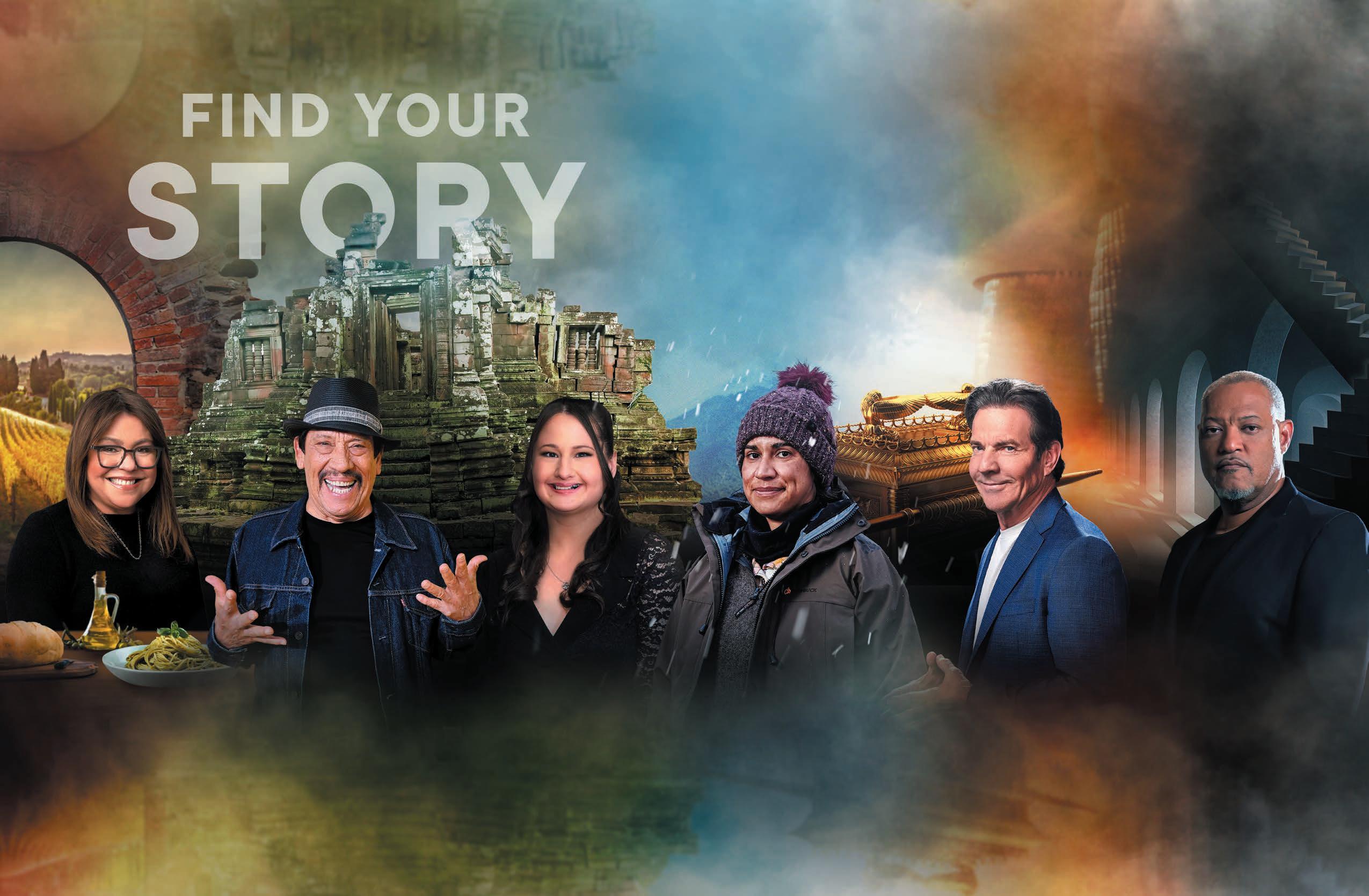






































Monsters of the Deep
Duration: 2 x 60’
Producer: Mentorn Media & Krempelwood










































Duration: 2 x 60’
Producer: Mentorn Media & Krempelwood











Focusing on programming strategies and acquisition trends, our “Content Climate” report will keep you one step ahead in the game. Design by Mark Lacoursiere.
Distributors showcase their slate highlights
Shailene Woodley explores eco-activism in Hope in the Water (Photo: Sam Johnson/Intuitive Content)

WBD’s Jason Sarlanis on ID’s MO; producers dish on the shows they wish they made
Network executives on meeting current challenges with new models
Distributors talk international appetites for non-fiction
Our selections for “can’t miss” projects heading to Cannes
500 words with A+E Networks’ Rob Sharenow
Tobe a somewhat savvy consumer of screen content in the streaming era requires accepting that your viewing choices may be as influenced by technology as they are by the comparatively quaint machinations of the oldschool commissioning model.
Of course, HAL and its (his?) AI buddies aren’t completely calling the shots for the schedule. Even the platforms that are openly basing greenlighting decisions on data pulled in via the increasingly almighty algorithm maintain that it’s still humans making the educated call as to what makes it to air.
But more and more, it’s the tech that is driving you towards what to watch. If you’ve stood slack-jawed in a grocery store aisle silently agonizing over which flavor or brand of tortilla chips to grab, you understand that sometimes, too much choice can be paralyzing. As NYU marketing professor and occasional TV presenter Scott Galloway has said, “Choice is a tax on your time and attention. Consumers don’t want more choice. They want to be more confident in the choices presented.”
This should ring true to anyone who has scanned through the seemingly never-ending parade of tiles on their SVOD of choice. Those “If you liked Real Housewives of Poughkeepsie” prompts are, for many, a welcome guide through the vast wilderness of the content catalog. Netflix, for example, has said that more than 80% of the programs users watch on the platform are discovered through its machine-driven recommendation system.
Fair enough, when it comes to discoverability. But when it comes to buying and selling content, there is a sizable degree of pushback from producers against what they’re seeing as algorithm-driven commissioning and “projection models” that could replace a buyer’s gut instinct with arrangements of data points. And, at a time when programming teams made of actual humans are being downsized and networks are increasingly risk-averse when it comes to greenlights, it’s not surprising that the idea of building a slate, or assessing a pitch, via algorithm might be viewed with suspicion, or even outright contempt. Not all networks are buying into the algorithmic approach, or at least not in public. The BBC’s head of documentaries, Clare Sillery, told UK trade outlet Broadcast about her team’s aim to find content that moves towards “the opposite of what we’re doing,” or “what is the next turn of the wheel.” And, in this issue’s “Content Climate” report, you’ll get the goods on what some actual human programmers are aiming to stock their shelves with as we head into 2025 and beyond.


Doubtlessly, it’ll be some combo of algorithmic efficiency and old-fashioned human chutzpah that will shape the commissioning process as we head towards 2030. But here’s hoping that even in the face of tech advancement and economic pressures, it’ll be the creative risk-takers and innovators on both sides of the equation — buyers and sellers — who will still be leading the charge.





Be well,
Barry Walsh Content director and editor-in-chief Realscreen





















Fall 2024 Volume 28, Issue 1
Realscreen is published 2 times a year by Brunico Communications Ltd., 100366 Adelaide Street West, Toronto, Ontario, Canada
M5V 1R9
Tel. 416-408-2300 Fax 416-408-0870 www.realscreen.com
EVP Realscreen Mary Maddever mmaddever@brunico.com
Content Director & Editor-in-Chief Barry Walsh bwalsh@brunico.com
Art Director & Training Supervisor Mark Lacoursiere mlacoursiere@brunico.com
Associate Editor Andrew Tracy atracy@brunico.com
Special Reports Editor Justin Anderson janderson@brunico.com
Contributor Marie-Agnès Bruneau
Lead Event Producer Tiffany Rushton trushton@brunico.com
Associate Publisher Joel Pinto jpinto@brunico.com
Marketing Manager Karyna Dovnich kdovnich@brunico.com
CORPORATE
President & CEO Russell Goldstein rgoldstein@brunico.com
EVP, Realscreen & Strategy/ Editorial Director, Brunico Mary Maddever mmaddever@brunico.com
Director, Finance and Administration Michelle Plaskon mplaskon@brunico.com
Production Supervisor & Operations Support Adriana Ortiz aortiz@brunico.com
Manager, Customer Experience Christine McNalley cmcnalley@brunico.com
All letters sent to Realscreen or its editors are assumed intended for publication. Realscreen invites editorial comment, but accepts no responsibility for its loss or destruction, howsoever arising, while in its office or in transit. All material to be returned must be accompanied by a stamped, self-addressed envelope. Nothing may be reproduced in whole or in part without the written permission of the publisher.
ISSN number 1480-1434 © Brunico Communications Ltd. 2024
U.S. Postmaster: Send address changes or corrections to Realscreen, PO Box 1103, Niagara Falls, NY, 14304 | Canadian Postmaster: Send undeliverables and address changes to realscreen, 8799 Highway 89, Alliston ON L9R 1V1. Canada Post Publication Agreement No. 40050265 Printed in Canada
To subscribe, visit www.realscreen.com/subscribe, email realscreencustomercare@realscreen.com, call 416-408-2448, or fax 416-408-0249. Subscription rates for one year: in the US, US$59.00; in Canada, CDN$79.00; outside the US and Canada, US$99.00. ™ Realscreen is a trademark of Brunico Communications Ltd.























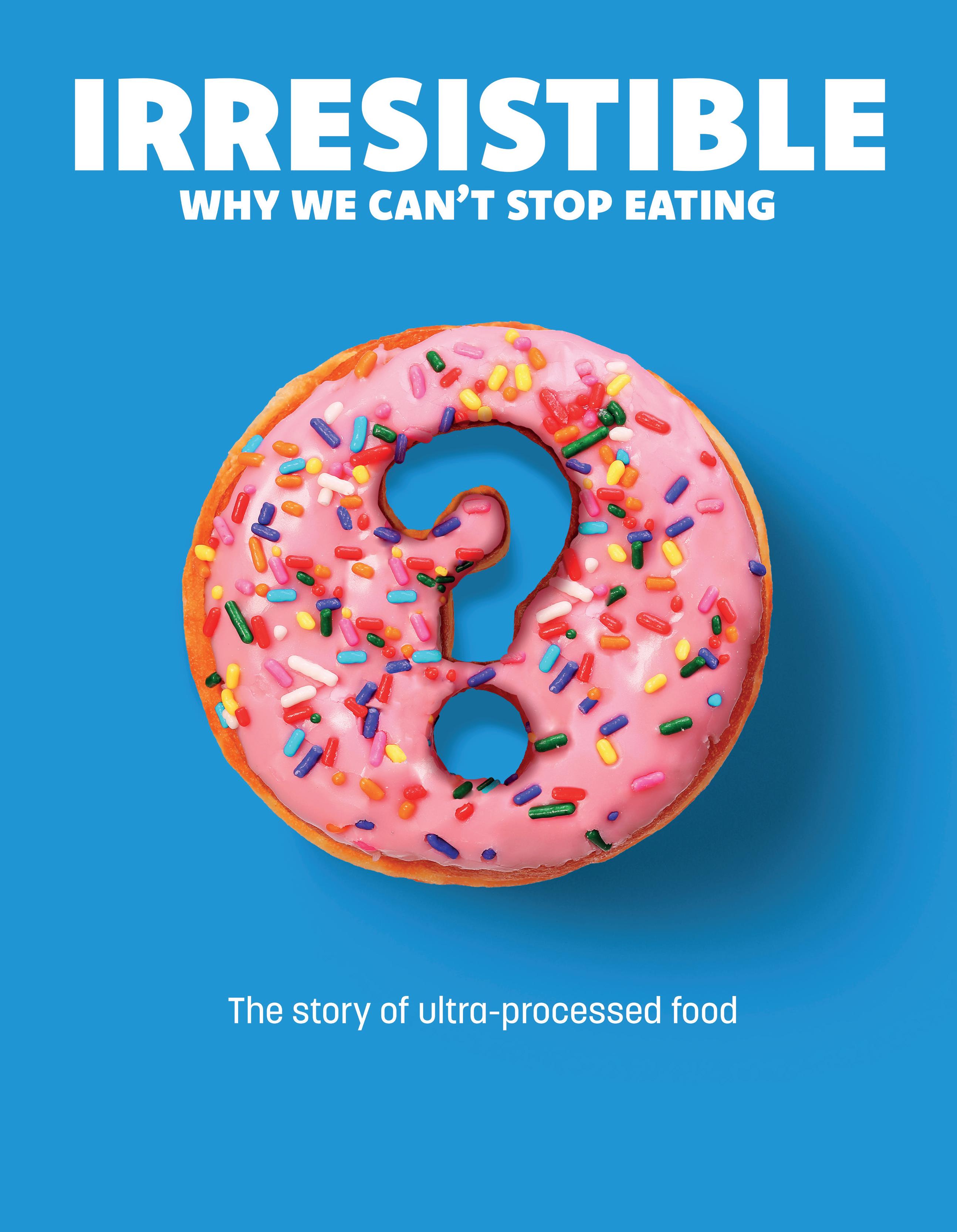

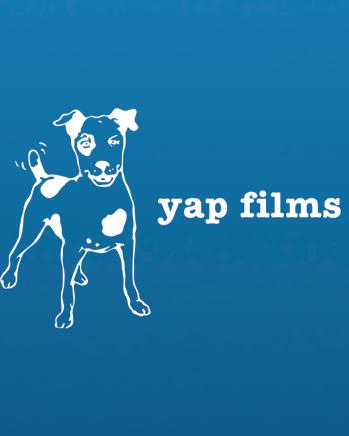

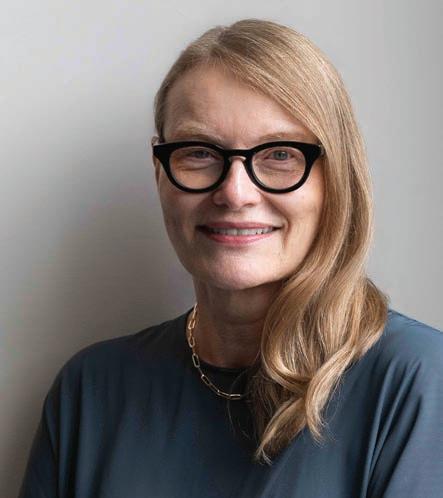
UPCOMING ADVERTISING & SPONSORSHIP OPPORTUNITIES
Winter 2025
Editorial features include:
• Realscreen’s Factual Under 40
• Best of 2024
• Trendwatch ‘25
• DIALOG Spotlight
• The New Collaborators
Sponsor Supplement
BONUS DISTRIBUTION:
• Realscreen Summit
• NATPE Global
BOOKING DEADLINE: December 17, 2024
DIGITAL ADVERTISING: Daily newsletter and realscreen.com
For information on these opportunities, or if you’re interested in sponsorship or private meeting space at Realscreen Summit February 3-5, 2024 or NATPE Global in Miami, email us at sales@ realscreen.com or call 416-408-1376.
his issue dives into the nitty-gritty of the non-fiction market here and now; the struggle to ring in ‘25 is real in the reality space and consolidation impact news keeps rolling in.
The ratio of pitches to greenlights has always made production more of an optimist’s game, but new Plan As are more regularly and rapidly required now. When it comes to prioritizing, the more insight into how things may shake out over the next few years, the better — and honing a relevant content strategy is the focus for Realscreen Summit in Miami.
Throughout consultations with the advisory boards for the Summit and our co-located sister event, NATPE Global, we kept hearing that as the urgency to pivot has ratcheted up, the need for collaboration, new ways to monetize IP and new funding models is leading the industry down interesting new paths. One area of potential funding that seems to be on more people’s radar is big brands.
That’s why the Realscreen Summit is inviting marketers and media agency execs to the table, to share how advertiser investment is evolving, and the impact that will have on the industry. Matt Rotondo, head of brands at U.S.-headquartered talent management and production company Sugar23, sees growing interest from brands to invest and partner early on developing projects. He also points out that there are many projects that align with brand values & initiatives, including socially conscious programs like sustainability and CSR. These strategic fits can unlock resources to develop, produce, promote and deliver audiences to those shows.
The CMOs I’ve been talking to are also keen on reaching consumers more directly via entertainment. As they weigh the effectiveness of their traditional media investment options, the potential in backing cause-related content has appeal, and while they cite challenges for balancing brand guidelines with project needs, many have plans in this space.
Funding for social impact content is not abundant in the market — it’s challenging to program a one-off about saving the environment versus a spin-off with built-in
mass audience appeal, but anything that helps tip that balance by derisking the equation is welcome and needed. While Golden Bachelor in Space would certainly have great discoverability, there’s a demo looking for programming that sparks love for our home planet.
To that end, Realscreen Summit’s annual pitch competition has a new partner — Partners in Kind. This year’s Summit Showdown theme is Pitch for Good, with the media company dedicated to bringing purpose to production kicking in a $20K development deal for feature or series ideas that will have measurable social impact. PiK’s support has also opened the competition up to more voices, so we’re excited to see the ideas that roll in for the Nov. 15 deadline.
Propelle, Realscreen ’s content accelerator for women in collaboration with Abby Greensfelder’s Everywoman Studios, also has a new partner who will help steer fresh ideas into the pipeline. A+E Networks is supporting the program that sees women creators hone their pitches with industry mentors by contributing a $25K development deal.
Also new this year, Realscreen’s DIALOG mentorship program has a new partner in NATPE, along with our founding partners Warner Bros. Discovery and A+E, so participants have a broader platform across the Summit and NATPE Global’s all-genre market in Miami in February.
As almost half of the Realscreen crowd coming to the Summit will be staying on for NATPE, this year will bring more content and connections throughout the week as streamers, studios, networks and tech players share plans which will inform and shape the path forward.
Hope to see you there.
Cheers,mm
Mary Maddever EVP, Realscreen
P.S. Realscreen is at booth P-1.D82 for MIPCOM and would love to hear from you re: ideas & topics you would like to read/ hear more on. mmaddever@brunico.com


… in which Realscreen gets your takes on the most urgent questions of the day. This time around, we’re asking:
We can’t put the AI genie back into the bottle. Given that reality, what are the most efficient and ethical ways producers can incorporate it into their workflow?

Jennifer Petrucelli
There are many ways that AI can be used in documentary filmmaking. So-called “assistive AI” can be incredibly helpful in production workflows, with transcription, image up-resing and audio cleanup, among other applications. Generative AI (GenAI) — by which we mean the type of AI that creates images, audio or video from user prompts — can also be an amazing creative tool: it can mask the identity of vulnerable subjects or create imagery or audio where none exists, either due to the time period being represented or the destruction or suppression of archival material.
Regardless of the reason why GenAI is used, we believe the key is that it is done transparently, so that audiences understand what is and is not synthetic media. No one likes to be deceived — and that includes consumers of nonfiction media. When they are, there tends to be pushback — even blowback. And once trust between filmmaker and audience is compromised, it is very difficult to rebuild.
Another issue in the ethical use of Generative AI is that non-fiction filmmakers put the same time, research, and intention into creating imagery and/or audio as they would if they were producing a recreation. GenAI, for all its power, can draw on biases in the input data, and thus generate wildly inaccurate results. It’s critical that human discernment stay at the center of this process.
Jennifer Petrucelli is a founder and archival producer at Sub-Basement Archival, and serves as co-director of the Archival Producers Alliance (APA) alongside Rachel Antell and Stephanie Jenkins.

Benjamin Field
Those who believe that AI in TV and film is merely about creating cheap visuals harvested from stolen creative data miss the point.
At Deep Fusion, we believe that when used ethically and sustainably, AI can be a powerful tool for advancement; producers who fail to recognize this new potential will find it hard to secure commissions. Networks and platforms want innovation, not just cost-saving measures. For years, commissioners have aimed to reinvent the wheel, and AI is enabling us to do that in the TV landscape.
Efficiently and ethically incorporating AI into production workflows requires more than just adding new tools: it demands a deep understanding of how AI enhances the creative process. Large language models (LLMs), for example, have become a useful resource for ideation, offering a strong first draft that helps streamline the creative process. Synthetic voices also are proving to be invaluable as placeholders in voiceovers, maintaining momentum during production while awaiting final recordings. And ethical image generators are already providing solid backgrounds for GFX plates, particularly in archival projects.
Each of these AI tools brings efficiency, but the real value comes in how they free up human talent to focus on what matters most: creativity and storytelling. The advantages of AI go beyond pre-packaged online “software”: by combining, crafting, and constructing new neural networks, we can unlock an entirely new way of reimagining the future of TV.
Benjamin Field is a co-founder and executive producer at Deep Fusion Films, a pioneering prodco in the field of ethical AI, as well as a member of the Archival Producers Alliance.
Because you don’t just make and sell unscripted programming — sometimes you watch it too!


Briege Whitehead, founder & CD, Whitespark Pictures
Ningaloo Nyinggulu (ABC Australia). We’re so lucky in Australia to have some of the best (and last) intact, truly wild regions on the planet, and this three-part natural history show about the Ningaloo area of Western Australia — where the desert meets the sea — presented by author/conservationist Tim Winton, is such an incredibly beautiful series, so well-crafted and stunningly captured.

Francesca Johnson, founder & EP, Table41 Entertainment
The Fortune Hotel (Tuesday’s Child for ITV1). It played with the deception and trickery that we all loved in The Traitors with fantastic characters, exciting challenges, a lush setting and an hilarious host in Stephen Mangan. Tuesday’s Child literally had us binge-watching (nearly) the entire series on a flight to the U.S., then rushing home from the airport to finish it when we were back.

Nyinggulu, from Artemis Media and Matter of Factual (Photo:

Lashan Browning, founder of Paramount-backed, L.A.-based Antoinette Media (VH1’s Love and Hip Hop), tells us her current entertainment obsessions.
Stephen Dost, vice president, content, Arrow Media
Quiet on Set: The Dark Side of Kids TV (Maxine Productions for Investigation Discovery and Max). In an age of limitless options and fractured attention, this broke through the noise and got everyone talking. Quiet on Set has changed the entire game.

Derren Lawford, founder/CEO, DARE Pictures
How to Rob a Bank (Lone Wolf Studios, Pinball Party Productions for Netflix). I’m obsessed with how good this was. It was premium, entertaining, and revelatory at every turn. From the truly cinematic scenes of re-enactment, to the jaw-dropping unseen archive of a double life lived, to the atmospheric and apt use of animation, this feature doc sets the bar for programmakers. I would also happily watch a scripted film version of this, and would be amazed if someone isn’t trying to adapt it.
Pachinko — this series beautifully portrays the lives of adults over 70, emphasizing the strength and resilience of women in the face of life’s challenges.
The Celebration, directed by Thomas Vinterberg. A calm and seemingly perfect exterior reveals the complex and often dark nature of human behavior.
I’m currently reading Artemisia Gentileschi by Mary D. Garrard. The book highlights the life of an unsung hero of the Italian Renaissance, a powerful figure in both art and feminism.
YouTube — a platform that offers limitless discovery at your fingertips. Some of my favorite channels include Financial Times, Marques Brownlee, BBC News Africa and National Geographic, offering a mix of insightful content across technology, global news and nature.

By Andrew Tracy
Jason Sarlanis, the head of the Warner Bros. Discovery net, dishes on the “secret sauce” in ID’s true-crime recipe, and where he wants to take it next.
By
any yardstick, 2024 has been a banner year for ID. Its event docuseries Quiet on Set: The Dark Side of Kids TV — which delves into the toxic culture behind some of the most iconic children’s TV shows of the 1990s and 2000s — became a sensation across platforms, setting a Nielsen record for the best single-week performance by any title on WBD streamer Max and earning the network its first-ever Primetime Emmy nomination. As Jason Sarlanis, president of Turner Networks, ID & HLN, linear and streaming at Warner Bros. Discovery details here, the net is looking for a wide range of approaches to true crime, including some as-yet-untapped territory.
How much of your programming is generated internally versus pitches that come to you?
I’d say about 50% of the content we make is internally generated and then brought to production companies and/or filmmakers, because we do believe we know our audience better than anyone. We have some trusted partners that we work with in very high volume, but when you look at some of the biggest launches we’ve had since I joined the network — Jared from Subway [from Double Act TV], The Curious Case of Natalia Grace [Hot Snakes Media], Quiet on Set [Maxine Productions] — all of those are [from] filmmakers that had not been producing for ID before.
So we’re excited to take risks with new production companies, and, [because] true crime is such legally fraught territory, we can help storytellers who aren’t experienced in the genre [by supplying] them with our expertise. The truth of the matter is, the development process can be lengthy with us, because there is a level of rigor to fact-checking and scrutinizing these stories to make sure that they are really airtight by the time that they air.
To what extent do cross-platform considerations, for sister outlets like Max and Discovery+, factor into your commissioning decisions for ID?
Especially for our documentary event programming, for which we use the overbrand of ID True Crime Events, all of those are designed to be optimized for streaming as well as linear. WBD has put a lot of emphasis around Max and its future viability for us as a company, so when [ID is] commissioning content we are really thinking of ourselves as the definitive source, not just the airing platform.
There are certain nuances, e.g., delivery specs, reversioning, ad breaks, etc. [to adapt the show for] the streaming platform versus the linear platform, but for the most part what we’re seeing is, the audience seeks out phenomenal content, and will watch it where they want to watch it and how they want to watch it.
In terms of the linear channel, what do you look for in terms of returnable weekly series? [First], we’re looking for shows that bring viewers into the psychopathy of crime, that help the audience analyze and understand it via expert [testimony]. We’re also looking for shows that appeal to the armchair detective: long-running anthologies like On the Case with Paula Zahn or Homicide Hunter , that allow the viewer to get closed-ended looks at different murders.
Lastly, we have a category of shows that allow viewers to be “voyeurs” into the criminal justice process: we had a show called Real PD where we kitted out an entire police department [with camera crews], and we did a [pilot] last year that now we’ve now expanded into a series, [Operation Undercover], where a former [undercover] agent brings viewers through the process of a different sting each week.
What are some areas of your programming that you’re looking to enhance?
One of the places we’ve had a lot of success is the intersection of pop culture and true crime (e.g., Death by Fame, The Playboy Murders), so we’re always looking for more of those.
One of the other things we’ve seen recently is viewers embracing some of the more stalwart [presenter] names in true crime. So finding complementary faces that could sit alongside Paula [Zahn], [Homicide Hunter’s] Joe Kenda and John Walsh [America’s Most Wanted] on our air is interesting to us as well.
Are there any subjects you haven’t yet tapped into that you’re interested in exploring? I’d be very intrigued to figure out what ID’s version of a show set in prison would be; that’s one area of the criminal justice process we haven’t really tackled all that well [yet].


The development process can be lengthy with us, because there is a level of rigor to scrutinizing these stories, to make sure they’re really airtight.
I also think a serialized show would be very interesting to experiment with — how do we tell a vast enough true-crime story that twists and turns over multiple weeks, and that could come back for subsequent seasons.
What are the qualities that mark out a project as the right fit for ID?

Especially in our documentary event [series] category, we’re looking for shows from filmmakers that are really passionate about the subject material. Secondly, we’re looking for unique access to the story — whether that’s someone who’s willing to whisteblow for the first time, or a person who is directly, emotionally connected to the subject matter and is willing to let viewers into their story.
And lastly, are we treading fresh waters? Quiet on Set being a perfect example of that — to be the first television platform to expose what was going on in children’s television using that particular story was one of our benefits there, and we’re always looking to do that. I always tell the team, “Ideally we’re first, ideally we’re best,” whenever we’re cracking a story.



Sometimes a genre mash-up is just the ticket for crafting a fresh format. Here, the team behind Tastemade’s Kitchen Glow Up reveals the inspiration behind its “culinary-reno” combo.
Culinary formats merge with the home renovation genre in this show fronted by kitchenware entrepreneur and influencer Ellen Marie Bennett (pictured), in which she goes into the houses of avid home cooks to overhaul their kitchens and put the “fun” back in “functional.”
As Tina Dobbelaere, director of development for producer Intuitive Content explains, the prodco had been looking to build a show around Bennett
for a while, and their team finally hit on the germ of the concept while scouring their star’s Instagram.
“Ellen did all these really fun videos where she would go into a friend’s house and start ripping apart their refrigerator, and then reorganizing it as if they were a chef,” she says.
“That inspired the format for the whole series, and we went wider: now, she goes in and organizes their entire kitchen to make it functional and beautiful.”


As Intuitive president Patrick Weiland explains, his team drew on its experience in both culinary formats (notably several titles fronted by the prodco’s founder, chef Andrew Zimmern) as well as the reno and design space, which was less familiar territory for Bennett.
“Patrick McMahill, who runs our production department, was the director on Home Town for HGTV, and we have a lot of HGTV veterans here, so they were really instrumental” in
scaling up Bennett’s skill set for the reno element, Weiland says.
In addition to the show’s genre mash-up, Weiland cites Bennett’s social media roots as a key source of the program’s aesthetic. “There are things in Ellen’s show that haven’t been in a renovation series before, even a kitchen renovation series — stuff that we’ve lifted from social media, that energy, that immediacy, the quickness and the brightness of it.”
Andrew Tracy





Channel 4’s true-crime hit The Push proved the pull of premium box-set docs.
The rate of change gripping the television business is accelerating, propelled by global economic conditions and an industry still adjusting to the impact of streaming. Here, a select group of veteran buyers weighs in with their perspectives on the current content climate, and the new models they’re exploring to best ride the waves.
As 2024 began, members of the global television content community picked themselves up, dusted themselves off, and offered a collective sigh of relief that 2023, an annus horribilis for screen media, had come to a close. But, mere days into the new year, it was apparent that more change was on the way, with legacy media companies taking big steps to maintain relevance and market share in the streaming era.
In early January, UK public broadcaster Channel 4 unveiled part of its plan to remain, in CEO Alex Mahon’s words, “a trusted, disruptive and distinctive brand into the 2030s.” The significant strategy shift, dubbed
“Fast Forward,” intends to turn Channel 4 into a “digital-first public streamer” by 2030.
So what does that mean?
“That’s quite a good exam question,” quips the pubcaster’s chief creative officer, Ian Katz.
“First, it’ll mean that we’re a streamer first and a broadcaster second. Our primary focus is on our streaming audience and serving that. That’s quite a big transition, and we’re not at that point yet in terms of numbers. We focus our commissioning efforts on streaming, but in terms of older viewers, the majority are still with broadcast. So it’s a world where we’ll be predominantly a streaming business, with a broadcaster attached.
“The second point is the emphasis on public service streaming,” he continues. “We all know what the broad fare from a global streamer looks like. We know that there’s a lot of drama that increasingly reminds me of airport fiction; we know that, in the doc space, there’s a lot of true crime and celebrity and not much else. There’s a broadly international appeal to much of the content, and not much in the way of local specificity of stories told. So being a PSB streamer means that we are as dedicated to telling the story of Britain as we ever were as one of four terrestrial broadcasters, but we’re doing it in a streaming environment.”
That shift will require not only a structural change (including the elimination of approximately 200 roles, as was also announced in January), but also what the pubcaster is calling a “shift in investment to the types of programming that drive streaming growth” — namely, premium documentary, reality and factual entertainment content, alongside scripted entertainment and comedy.
“Factual entertainment has always been a key part of Channel 4, because it’s a place where you can make really purposeful, noisy shows but also draw a wide and often young audience,” Katz maintains. Citing such titles as The Jury: Murder Trial and the
forthcoming adaptation of Australian format Go Back to Where You Came
From, he adds, “We’re really hungry for the kind of social experiments that will say something sharp about the way we live now, and the way that our country is now, but that will still be hugely entertaining to watch and can create a national conversation.”
Katz says C4 is also making “significant investment” in more volume-heavy reality, “where the purpose is still there but lower in the mix.
“We want shows that can get significant volume, like Married at First Sight, but have real heartland humor and that sort of ‘Channel 4 mischief’ around them.”
C4 has seen considerable success with its premium factual slate over the course of the past year, with more of a focus on limited series or “box-set” projects such as the
Ian Katz

two-parter The Push: Murder on the Cliff, from Candour Films. That approach to the genre features prominently in the “Fast Forward” strategy.
“It’s those pieces that are capable of burning brightly and that feel like fresh takes of really resonant stories,” Katz says. “I suppose my challenge to producers is: how can we find the stories that will do the job of something like The Push, outside of crime? How can we look at other aspects of life with the same level of engagement and propulsion and hookiness that we use in true crime? There’s a real prize to be had there.”

NBCU’S PLATFORM PLAYS: NOT “EITHER/OR” BUT “YES, AND…”




We’ll be a streaming business with a broadcaster attached.
While the focus on nonfiction and unscripted in the “digital-first” version of Channel 4 sounds promising for producers in the space, there are other aspects to consider. As any streamer that has built a business out of premium programming will tell you, it’s an expensive proposition. Enter a renewed emphasis on coproduction and pre-buys.
“To make stuff with higher tariffs, having international partners makes it more doable,” Katz says, noting that C4 has “a number of premium docs with U.S. partners.
“At the other end of the spectrum, what we have to do is deliver our linear viewing more cheaply,” he continues. “So if the show isn’t going to give us anything in streaming, it’s got to be cheap. And that [leads to] really innovative thinking around pre-buys, or ‘acquimissions’ — that space between acquisition and origination, where there is quite a lot of value to having Channel 4 on board early for a producer who is putting together something with international funders.”
Barry Walsh
Depending on who you talk to, it can be said that legacy media’s assorted forays into the streaming scene have either been hampered by coming late to the party and ceding valuable ground to tech firms-turned-content destinations; or, that it’s incredibly wellpositioned to create hits across platforms and migrate eyeballs to whichever part of the portfolio makes the most sense.
In the case of NBCU-owned streamer Peacock, there are success stories of note, particularly in unscripted. The U.S. version of global format sensation The Traitors is billed as a Peacock Original, while another format juggernaut, Love Island USA, was made a streaming-only Peacock exclusive in 2022 after three seasons on CBS, and became the service’s most-streamed unscripted original series in its first three weeks.
While these streaming-only successes illustrate a strategic savviness — build the Peacock brand with watercooler-worthy originals — they’re only part of the story when it comes to NBCU’s approach to commissioning nonfiction and unscripted content, according to programming execs
Sharon Vuong, EVP of alternative programming, and Cori Abraham, SVP of development for documentary and crime.
“When it comes to linear vs. streaming, it’s not ‘either/ or’ but really ‘yes, and,’” says Vuong. “Most [if not] all our programming is available on Peacock next day after airing on linear, giving each series the opportunity to find an even wider audience. Regardless of platform, we strive for each new series to have a sense of urgency to watch.”
“All of our true-crime programming is considered crossplatform,” adds Abraham. “When we decide to develop a project, we aren’t always 100% sure of its ultimate platform home. Our main priority is creating compelling content, and then finding the best home [for it] within our portfolio.”
This symbiosis between linear and streaming platforms not only allows for a higher profile for projects that make their debut on Peacock, but also brings new audiences to existing titles, such as Oxygen’s long-running true-crime franchise Snapped
In addition to this crossplatform approach to
Sharon Vuong





Regardless of platform, we strive for each new series to have a sense of urgency to watch.
commissioning, NBCU has also found success with another recent innovation — a form of transcontinental commissioning that has seen the network group “co-order” unscripted series with an international network. This model was first employed for The Traitors, which was co-commissioned with the BBC, and is next being applied to another unscripted sensation, the adventure format Destination X. (In both cases, a single prodco handles both the UK and U.S. versions: Studio Lambert for The Traitors, and Twofour, teaming stateside with Universal Television Alternative Studio, for Destination X.)
Like a traditional copro model, it’s an approach that reduces both costs and risk for the partners. But Vuong also highlights the creative upside: “Putting a unique transatlantic or transcontinental spin on a show with commissioners from a different territory brings together shared learnings and fosters the best creative ideas.” BW
For network groups, the in-house production studio has been an important part of the equation for eons. But now, with the arrival of a whole new content delivery system that’s populated with deep-pocketed competitors, having a studio that can not only efficiently produce programming but also generate and monetize IP at home and abroad is practically essential.
First established in 2019 to oversee production on the massive format The Masked Singer, Fox Alternative Entertainment (FAE) now not only handles some of the U.S. broadcaster’s top unscripted properties — such as the Gordon Ramsay–fronted Next Level Chef (coproduced with Studio Ramsay Global) and the CJ ENM format I Can See Your Voice — but also produces third-party unscripted content for domestic and international broadcasters.
According to Allison Wallach — who oversees FAE as part of her recently expanded remit as global head of unscripted programming for the Fox Entertainment Studios (FES) portfolio, which includes FAE, Studio Ramsay Global and Harvey Levin’s TMZ — Fox plans to meet the demands of an increasingly global content ecosystem by innovating the inhouse production studio model, and the relationship between it, the production community at large, and other buyers.
Wallach says the goal for FES is “owning IP and having a global footprint.” This is done partly through establishing cost-efficient central production hubs for the company’s bigger, established series — e.g., the Next Level Chef facility in Ireland, which will be handling
Fox’s “global footprint” strategy includes international production hubs for large-scale shows like Next Level Chef
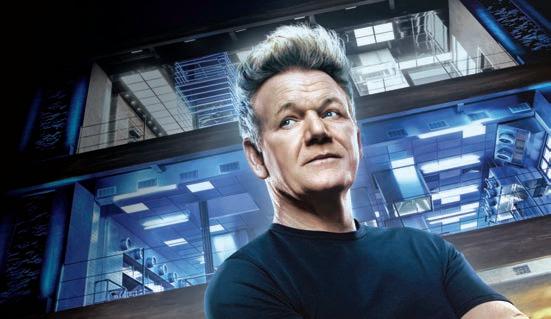

Allison Wallach







The network would never take the position that you have to come through the studio to sell to us.
Projects originating from the fund have included The Big Deal for Ireland’s Virgin Media Television (with Dublin-based BiggerStage), and recent co-developed formats such as Beat My Mini-Mes (w/t) for TF1 in France and the dating program Marriage Market (w/t) for Germany’s ProSieben.
“We’ve been able to sell some of our other formats around the world; that’s part of the strategy,” says Wallach. “It was so expensive to be filming these pilots here, and for the cost of doing one pilot you could produce a sixepisode or eight-episode series in other territories.”
upcoming adaptations of the format for Germany and Spain — and through initiatives such as the International Format Fund, which was established in 2021 to invest in and develop international unscripted programming that would provide local broadcasters with cost-effective content while also giving Fox the ability to “road test” a format in another market and assess its domestic potential.
Under the restructure instituted by Fox Entertainment CEO Rob Wade, the group’s constituent units — FES, the Fox Television Network, and sales arm Fox Entertainment Global (FEG) — are distinct but not siloed. Thus, producers pitching the network for the U.S. market can also look at partnering with FES to get projects on air, which then can be shopped internationally by FEG.
“The network would never take the position that you have to come through the studio to sell to us, but I do believe there is a trust factor with the way we’ve been able to execute the shows,” says Wallach. Andrew Tracy, BW
Ambitious
Historically, international coproduction has been a particularly attractive proposition for broadcasters during times of economic uncertainty, and the current wave of interest in copro is no exception. However, the need to find suitable financing to fund ambitious projects often entails competing creative requirements and preferences for the various territories involved, which can make the process a daunting one.
In 2019, France Télévisions (FTV), together with other international broadcasters, sought to tackle this issue by launching the coproduction and development alliance Global Doc, which was intended to address both the changes in the content ecosystem and the competition of global digital platforms.

Operating under the motto “Conceive globally and co-create together,” the initiative allows partners to share their plans for ambitious projects with global appeal, mostly geared towards various specialist factual fare such as cutting-edge science, ancient civilizations, geology and space exploration. The group currently includes 10 members, with the founding PSBs France Télévisions, ZDF (Germany), CBC (Canada), Channel 4 (UK), SVT (Sweden), ORF (Austria) and ABC (Australia) now joined by PBS (U.S.), RAI (Italy) and NHK (Japan).
Global Doc also moved a step further by organizing public calls for projects, with the latest taking place at Sunny Side of the Doc.
“We looked for the points of convergence in the editorial
lines of Global Doc partners, and science and ancient civilization was a major one,” explains Caroline Behar, France Télévisions’ director of international coproductions and acquisitions. “It is a very universal theme which is an excellent one for coproduction, [as] shooting locations are a bit everywhere.” (For its part, France Télévisions has needs for its France 5 weekly primetime strand, ‘Science Grand Format.’)
“As well, science usually involves a lot of CGI and new technologies,” she adds. “There are three key aspects in this call for projects: to be immersive, exclusive, and use new technology such as AI.”
Behar says that FTV coproduces around 10 docs with one or several Global Doc partners per year, while also taking part in another
30 coproductions outside of the initiative, at various levels of involvement.
Although international coproductions are often driven by funding needs, Behar emphasizes that coproduction can result in a stronger project. Citing one of the winners of a previous Global Doc call for projects — Destination Moon, about the upcoming Artemis Chapter II lunar exploration — Behar says that negotiations for the production’s access to NASA were aided by the number of international broadcasters on board. Thanks to its ambitious and newsworthy nature, the doc will take a primetime slot on mainstream channel France 2.







Behar admits there are inherent hurdles to clear in copro, as broadcasters’ needs are often driven by local concerns. Still, in the current content climate, international cooperation is good business.














Now that [broadcasters] have learned to know each other better, it is getting easier. There is more trust.








“Now that we learned to know each other better, it is getting easier. There is more trust,” Behar says. “But building a community of broadcasters making progress together with a goal to generate a single version [of a project] working for all remains a challenge.”
Marie-Agnès Bruneau
For only $300 more get the combo pass and stay for the full week February 5-7, 2025

Our annual examination of the international appetite for non-fiction and unscripted content reveals that even
in the midst of flux, broadcasters are still hungry for fresh programs.
Despite a challenging set of circumstances for the global screen content industry, there is still a substantial market for non-fiction and unscripted programming, according to key distributors in the trenches.
Those tricky circumstances are well documented and, indeed, were in play last year at this time.
But while some elements of the gloom of 2023 have lifted — no SAG-AFTRA strikes to contend with, for example — others remain intact. Most notably, commissioning downturns are continuing to reduce content spend, and challenging ad markets for linear channels are still squeezing budgets.
Off the Fence is seeing demand for premium docs, such as the eco-activist film We Are Guardians
By Barry Walsh
That said, international distributors are seeing reasons for measured optimism as 2024 moves into its latter half, even as the shifts affecting the industry seem to be taking on a more permanent nature.
CRIME STILL PAYS (AND SELLS)
It’s no surprise that, in a risk-averse market, the “if it ain’t broke, don’t fix it” maxim is being applied across territories, with popular genres retaining their footholds and even gaining ground in some schedules. True crime, for example, continues to attract audiences — and, therefore, buyers.
“Without a doubt, crime is still the most actively commissioned
genre right now, though the bar has been set so high for box sets that finding the stories to fit that demand has become much, much tougher,” offers Lilla Hurst, global head of acquisitions and content strategy at Blue Ant International. “But meanwhile, the longer-running, returning, hour-long and lower-cost crime series with very compelling titles are still selling very well, and we still continue to look to acquire them for our catalog.”
Paul Heaney, co-founder and CEO of Londonheadquartered BossaNova Media, says that the evolution of the genre over time has made it more adaptable to broadcasters’ myriad programming requirements, with true-crime content now being slated in “many guises: as impactful singles, short-run miniseries as well as long-runners.”
Heaney points to true-crime series on the BossaNova roster such as Cold Case Killers from Rare TV, as well as “characterbased access” docuseries like the male-skewing Extreme Tow Truckers (from Australia’s Fredbird Entertainment) and Border Patrol (from New Zealand’s Greenstone TV), as examples of “well-established, well-loved long-runners” that are in demand. And, with multiple windowing now a possibility for some territories, “non-exclusivity in negotiations is key,” he maintains.
“Our basic-cable buyers are looking for long-running series of 10 episodes [on the true-crime front],” offers Richard Life, SVP of acquisitions and coproductions for Cineflix Rights. “The trend is for younger-skewed themes that immerse viewers in the cases. The execution needs to feel modern, stylish, and to rely less on recreation and more on actual footage or social media [in the storytelling], for example.”
With risk aversion currently running rampant, buyers increasingly seem willing to only take chances on content in smaller doses. Poppy McAlister, head of UK-based TVF International, says that mentality works well for one-offs, especially those with a premium slant.
“We’re noticing that volume acquisitions are less in demand, which has an impact on commissions and pre-buys for genres such as lifestyle, factual entertainment and obs-docs,” she says. “Even on the acquisitions side, broadcasters increasingly opt to relicense older series of tentpole franchises which they have already aired and localized because they can rely on these to rate well.
“One-offs need to be premium so they have a chance of standing out in the schedule against major formats and popular scripted series, so buzzworthy, clickable titles go a long way,” she adds. “This is especially true for broadcasts with ‘digital-first’ acquisition and commissioning strategies.” She points to the RTÉ doc AI and You, which has now sold to more than 40 territories, as a case in point.
Blue Ant’s Hurst singles out Stormy — a feature doc on the media storm around Stormy Daniels’ legal battle with former U.S. president Donald Trump, from the high-powered team of Ron Howard’s Imagine Entertainment and Judd Apatow’s Apatow Productions — as a prime example of the power of premium.
“Access-driven content led by renowned creative talent that also holds ‘ripped from the headlines’ appeal continues to definitely attract bigger commissioning dollars while also attracting higher than average acquisition fees from buyers,” she says. “I think it’s this space where we still see one-offs doing very very well.”
“Very active and competitive”
“Buoyant free TV market”
GERMANY
“Opportunities across pay and free TV”
MENA
“Appetite for balanced world affairs docs”
Maartje Horchner, EVP of content for All3Media International, says political events such as the upcoming American election can be “a catalyst for commissions and acquisitions alike.
“Almost every territory will have their own take on the event and on the candidates,” she adds. “It is really important that you get exclusive access and make it as appealing as possible with the most hooky take.”
Further on the premium tip, Bo Stehmeier, CEO of Amsterdam-headquartered producer-distributor Off the Fence (OTF), says he’s seeing interest in “limited series of solid specialist factual — history, science and wildlife — within which each episode can also work very well as a standalone piece, especially for streamers and public broadcasters.”
Still, in some areas such as the FAST space, volume is not necessarily verboten. “There is still an appetite for series of higher volume, especially in the crime genre and those more established IP franchises like Top Gear [distributed by BBC
Studios],” he says. “These work well now for FAST channels with a single-genre focus.”
Cineflix’s Life concurs. “The rise of FAST and AVOD as an alternative to linear TV also offers a tremendous opportunity for distributors like us,” he says, pointing to strong, long-running franchises such as Property Brothers and Mayday: Air Disaster as providing the opportunity to “maximize the new opportunities presented by the rapid growth of digital.”
Cineflix has moved aggressively into the FAST domain, launching eight channels over the past year based on library content.
Mirjam Strasser, head of sales and acquisitions for Munichheadquartered producerdistributor Autentic, says digital sales — encompassing streamers, YouTube, and FAST channels — are accounting for half of the company’s total sales volume worldwide, with all of these avenues “proving to be dynamic and lucrative markets.” She adds that series are more in demand for the digital outlets than one-offs, “especially history,


travel and wildlife series, and also male-oriented series about science, tech, big machines or dangerous jobs.”
All distributors polled by Realscreen say that specialist factual is still in demand for linear and digital platforms, but the premium lens still applies.
“In the linear world, many of our clients are still in need of the top blue-chip one-offs, so we are always looking for strong content in history, especially ancient history, nature and science,” says Strasser, who cites Terra Mater Studios’ Jaguar Beach as a recent strong performer in nature. Besides one-offs, successful series volumes for such content can range between four to eight episodes, but for anything beyond eight eps, “the number of linear clients is very limited.”
“What I’d call ‘householdname history’ is still getting greenlights: whether that’s ancient, 20th- or 21st-century history, the onus is still on having new evidence, or access to archive or [archaeological] digs,” says Blue Ant’s Hurst. “There’s a huge amount of risk aversion in the market, so recommissioning existing series
in all these areas continues.”
“Pure wildlife is still competitive internationally, as is World War II, ancient history, modern history, and cutting-edge science,” says TVF International’s McAlister.
With the international success of the IDTV-created reality competition format The Traitors (which is shopped internationally by All3Media International), unscripted formats — particularly those that operate in a similar space, melding social experiment with thriller/mystery elements — are performing well and gaining traction globally.
Vasha Wallace, EVP of global acquisitions and development at Fremantle, highlights certain elements of current competitive reality formats in her catalog as evidence of a trend. Like The Traitors, whose U.S. and UK versions are set within the gothic halls of a Scottish castle, a number of newer formats in the Fremantle catalog are filmed on locations outside the studio.
As an example, Wallace cites Master of the Game (created with France’s TF1), in which the gameplay takes
place at a French chateau.
Similarly, the new comedic competition format The Heist Academy , from Nordic prodco Monster, shoots across the south of Norway, while social experiment Lost Ones: Ultimate Decision (first aired on Denmark’s TV2, and produced by Fremantle label Strong Productions) plunges its players into the Bulgarian wilderness.
“The other clear trend we are seeing is that many of these shows all have a series arc,” she adds. “The channels want their viewers to have a reason to keep returning to watch the narrative unfold.”
While suspense-filled competition formats such as these are having their moment, Wallace also points to how similar plot-twist elements are also increasingly becoming incorporated into other genres, citing such enduringly popular dating formats as Netflix’s Too Hot to Handle
COPRO VS. ACQUIMISSION
Of course, regardless of subgenre or series volume, there is one aspect of the non-fiction programming ecosystem that is of crucial importance across the board — funding the content itself. In an environment of shrinking budgets that is shared by broadcasters and their production partners globally, international cooperation is an increasingly vital part of the equation, but the process continues to evolve.
“We’re definitely seeing more pre-sales and ‘acquimissions,’ which have probably taken over from traditional coproduction as the most effective way to finance shows and for broadcasters to save on programming costs,” says Cineflix’s Life.
He adds that, in order for distributors to effectively piece together the patchwork of pre-
sales for a project, “the subject matter has to be of genuine international interest but also ‘must have’ — buyers need to feel they will miss out if they don’t jump on board now rather than wait to see the finished article.”
“It is a neat way of networks being able to secure in-demand programs before they hit the market, and often has the advantage of allowing broadcasters a slice of their own editorial input during production,” maintains TVFI’s McAlister.
“There’s a challenge in that a lot of channels are becoming more local and parochial in their editorial outlook, whilst at the same time wanting to coproduce, and then it becomes very difficult to find that common interest and approach,” offers Blue Ant’s Hurst. However, she notes that such copro partnerships do still occur, citing “iconic history” titles such as the recent The Lost Tombs of Egyptian Princesses, a copro between the U.S., France, Germany and Australia.
— the multi-episode non-fiction series that would come in at a reasonable cost, allowing the producers behind them to build their businesses slowly but surely.
“Production budgets are falling, sadly, with the midmarket area having shrunk,” admits BossaNova’s Heaney. “We are all responding to the market changes and ad revenue allocation changes.”
overall due to the larger bulk deals we can secure.”
“[I’m] happy to report that all public broadcasters around the world are still buying, but especially in Europe, where there is an enduring huge appetite for specialist factual and a growing one in more mainstream entertainment,” says OTF’s Stehmeier. “They are also trying to embrace

“Ripped from the headlines” content, such as the Blue Ant–shopped Stormy, rates well.
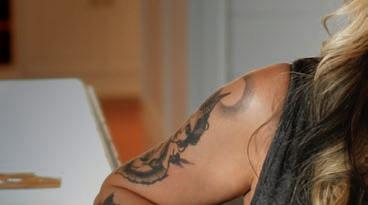
active over several years, such as South Africa, Latin America and Spain.”
All3Media International’s Horchner says the buying slowdown in the U.S. has put the spotlight on other territories such as Germany and Australia, “where pre-sales and coproductions are more prevalent than ever.”



The economic realities impacting broadcasters also influence the shift from true copro partnerships to pre-sales, says OTF’s Stehmeier. “On the specialist factual scene, copros, or more specifically pre-sales, are on the rise. For one, it helps the channel to maximize on its budgets but also, postredundancy rounds, many of these teams have been scaled back so aggressively that they have less resources for true copro and prefer pre-buys.”
Either way, with broadcasters increasingly limiting their choices to premium, lower-volume offerings or lower-cost but higher-volume series, the outlook is not rosy for the middle ground
Still, while economic challenges are impacting broadcasters across the globe in terms of both commissioning power and the executive infrastructure needed for greenlighting content or shepherding copros, competition for viewership remains as fierce as ever no matter where you are.
A number of distributors pointed to Central and Eastern Europe as hot spots for content sales, with Cineflix’s Life citing the region’s “buoyant free-TV market” as a prime factor.
“There are many active linear channels in this region,” concurs Autentic’s Strasser. “While license fees may be on the lower side, we find this region very satisfying
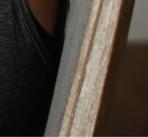
the audience transition from linear to non-linear, and are therefore much more willing to experiment with edgier and younger-skewing content for their on-demand platforms.”
“Channels with pan-regional footprints are still actively buying, but definitely with a tendency to prefer large packages,” observes Blue Ant’s Hurst. “A lot of them have seen their finance and legal teams shrink over the last couple of years [and] they’ve only got so much capacity for dealmaking, so they are preferring to negotiate those bigger packages with our sales teams.”
Hurst also says business is up “in markets that have been less
TVFI’s McAlister, meanwhile, points to the Middle East (“where the appetite for balanced world-affairs documentaries is high”) and Asia Pacific (where “the factual market remains active and competitive”) as regions of note. “The key here is to have a diverse catalog from producers across all continents,” she adds. The bottom line, according to our roster of assembled distributors: whether it’s via acquisitions, acquimissions or good old-fashioned commissions, the demand for new content remains strong. Heaney, for one, says that BossaNova’s sales are up 40% year-on-year, as “whenever there’s a downturn in commissioning, acquisitions come to the fore.”
“There’s no doubt the volume of what’s been commissioned in 2024 has been much less than in recent years, and some of the channels have bought less in 2024 because they were so well stocked,” Hurst declares. “But our sales revenues have increased, and we expect it to go further in 2025 as we meet the demands of all those buyers. So, in that respect, I’m very optimistic.”
(With files from Andrew Tracy)
Join us in celebrating the accomplishments of the unscripted industry’s next-gen leaders
Nominate someone whose achievements should be recognized in Realscreen’s Factual Under 40 report
Get more info and submit your nomination
Our annual hand-picked list of the “can’t miss” projects heading to the Croisette for MIPCOM looks a little different this year. Here, you’ll see what we’ve determined to be the top picks in various non-fiction and unscripted categories — programs that not only entertain and inform, but that also innovate and move their respective sub-genres forward. Look for more of our picks online at realscreen.com.

THE HOOK: David E. Kelley lends a hand to a celeb-powered spotlight on sustainability
As the first foray into unscripted for legendary TV producer David E. Kelley (Big Little Lies), who serves as executive advisor, this threeparter spotlights creative solutions and breakthrough “blue food” technologies that could not only feed us, but also help save our seas and fresh waterways. Alongside the innovators, aquafarmers and fishers who are working toward a sustainable future, the series also features celebrities who are passionate about environmental causes, including Martha Stewart, actress Shailene Woodley, writer and comedian Baratunde Thurston and chef José Andrés.
Justin Anderson
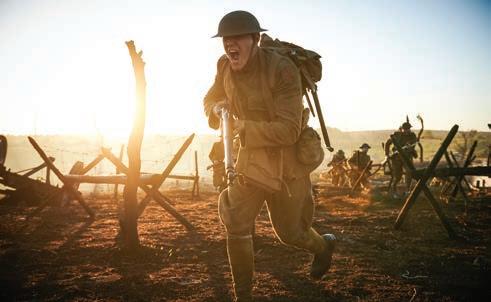
THE HOOK: Epic-scale dramatization to elevate an epic subject
A+E Networks’ most recent “mega-doc” makes use of the standard playbook of the History Channel event series, blending impressively mounted dramatizations with archive and expert interviews. The reason that playbook has become standard, though, is because it so reliably racks up wins, and this widescreen portrait of the so-called “war to end all wars” is no exception. Having also helmed the presidential paeans Theodore Roosevelt, Abraham Lincoln, FDR and Kennedy, series coproducer RadicalMedia has been A+E’s go-to for these annual tentpole titles, and with good reason: the cinematic scale of the historical recreations brings a credibly epic heft to the project. Andrew Tracy
THE HOOK: Charm-filled close-up on miniature worlds
Launched in Hamburg in 2000 by twin brothers Frederik and Gerrit Braun, Miniatur Wunderland — the remarkable miniature theme park that houses the largest model railway system in the world, as certified by Guinness World Records — has grown to become one of Germany’s greatest tourist attractions, drawing a million and a half visitors a year. Combining breathtaking photography of the impressively intricate miniature cities with whimsical stop-motion animation, archive material and interviews with the Brauns as well as the park’s quirky staff, director Sabine Howe’s feature doc takes a warm-hearted journey into the “smallest world in the world.” JA


THE HOOK: An inspirational and revelatory approach to the interview format
Adapted from the French series Les Rencontres du Papotin, this format (also known as The A Talks) sees assorted luminaries and public figures — including, for this Australian version, Aussie PM Anthony Albanese, actor Sam Neill and singer Delta Goodrem — interviewed by budding journalists with Autism Spectrum Disorder. The scribes-in-training, mentored by a top journalist from the territory, take part in a press conference of sorts, in which they get to grill their guests with probing questions that often lead to insightful and revealing answers. For those looking for an unscripted alternative to the wave of psychological one-upmanship shows that is now cresting post-Traitors, the warmth and heart of The Assembly is good news for the genre. Barry Walsh
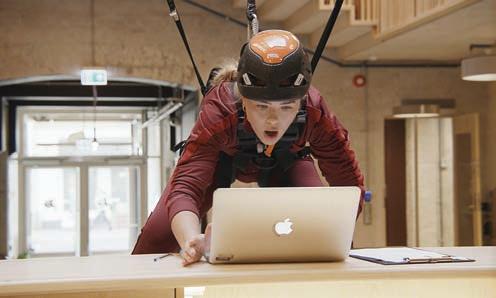
THE HOOK: Celebs compete in a high-stakes caper format
The caper-as-format concept is not untrodden unscripted territory (see Shine TV’s The Heist, a hit for Sky UK in 2019), but this new series from Oslo-headquartered Monster gives it extra juice with an all-celeb cast, who must prove their illicit bona fides by competing in a series of themed elimination challenges. Tweaking the typical last-playerstanding logic, as the ranks of the players get whittled down, an elite team is simultaneously being built up, with the three top felons ultimately tackling the greatest challenge of all at the series’ climax — the heist itself. AT
THE HOOK: Riveting eyewitness testimony to one of history’s greatest horrors
While thousands of citizens survived the atomic bomb attacks on Hiroshima and Nagasaki during World War II, albeit with injuries from the blasts and lifelong trauma, the numbers of “hibakusha” (or “bomb-affected people”) are now dwindling, with most now in their 80s and 90s. With its combination of sensitive recent interviews with hibakusha and gripping archive footage, Atomic People (which first aired on the BBC in July) frames the horrific tragedies of 1945 against the backdrop of 2024’s global instability, with the survivors’ testimony serving as a stark and relevant reminder that all these decades later, we are still standing under the shadow of the mushroom cloud. BW
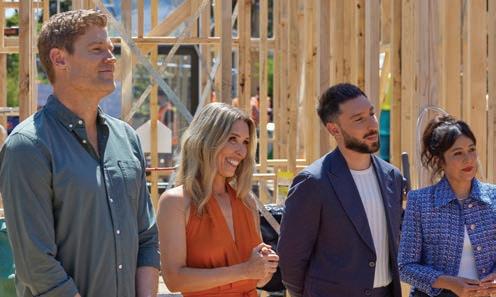
Produced by Endemol Shine Australia for Seven; distributed by Banijay Entertainment

THE HOOK: Home reno eye-candy with a clever competitive twist
Based on a New Zealand/Aotearoa series of the same name, this Australian format features a clever twist on the traditional home renovation show. Six deserving couples are given the chance to live in the homes they’ve always wanted — with the caveat that they all have to swap design and construction duties for the new abodes between each other. As they redesign and rebuild each other’s outdated dwellings room by room, the couples are judged by a trio of reno experts, who then present a big cash prize for the best dream home at the end of the series. JA

THE HOOK: Engrossing character studies of psychics and their closure-seeking clients
Premiered at this year’s Sundance, this feature doc follows a group of psychic mediums in New York City (including one with an expertise in communicating with deceased pets) who conduct deep and intimate readings for their clients. Are they con artists preying on grieving people’s need for answers? Can they really talk to the dead? And, if their clients are truly getting a sense of emotional closure that traditional therapy can’t provide, does it even matter? Addressing themes of loneliness, connection, healing and loss, this thoughtful film from director Lana Wilson (Pretty Baby: Brooke Shields) should appeal to both believers and skeptics alike. JA
THE HOOK: Paralympic hopefuls offer lessons in resilience alongside stunning displays of athleticism
The titles that tend to create the most buzz in the exploding sports-doc genre are those that combine “the thrill of victory and the agony of defeat” with captivating character portraits. This action-packed doc (available in 52-minute and 100-minute cuts), which follows five top parasport athletes as they strive to achieve their dreams of qualifying for the Paralympic Games, definitely hits that mark: beyond the extraordinary athleticism on display, the resilience and determination of the competitors will surely resonate. With the Summer Paralympic Games having just wrapped and the Winter Games coming in 2026, the international appetite for content involving Paralympian athletes should remain strong. BW


THE HOOK: True-crime tale examines intersection of post-MeToo social issues with the UK’s racial faultlines
Young Barrow-in-Furness resident Ellie Williams unleashed a firestorm in 2019 when she alleged that she had been raped and trafficked by a “grooming gang” led by business owner Mohammed Ramzan and several other local South Asian men. The subsequent investigation and trial ultimately cleared the accused men, and sent Williams to prison for perverting the course of justice, but not before the hoax ripped the community apart, and exposed the dark underbelly of UK racism in the process. Boasting access to several key players, this three-parter slickly melds the true-crime doc template with elements of a scripted thriller. JA















des Festivals
Cannes, France
21 → 24

THE GREAT WAR
The Great War tells the story of how the U.S. quickly built an army and transformed its military technology into effective weapons for what would become a war of machines, leading to an Allied victory in World War I. It’s also the story of how the stage for a new world order was set, one that would lead to World War II, conflict in the Middle East and a postwar battle of superpowers. (2 x 120 minutes)
A+E Media Group is a global content company known for popular and culturally relevant brands — namely A&E, Lifetime and The HISTORY Channel. Its portfolio spans global scripted and factual productions, independent films, digital platforms, live events and international content distribution. Reaching over 414 million households in 200 territories and 40 languages, A+E Networks offers a diverse range of media experiences worldwide. Headlining its MIPCOM lineup this year, A+E Media Group brings a variety of

COLD CASE FILE: DNA SPEAKS
Cold Case File: DNA Speaks is a new, 10-part documentary series focusing on murder cases that remained unsolved for decades, but which were ultimately cracked with DNA evidence. It explores these stunning scientific developments, as well as the unwavering dedication of families and investigators that eventually brought the killers to justice. (10 x 60 minutes)
standout productions that appeal to a wide audience. The Great War takes viewers through the U.S.’s rapid military transformation during World War I and the lasting impact it had on the world. Cold Case File: DNA Speaks shines a spotlight on how DNA technology helped solve old murder cases that had gone unsolved for decades. In Kevin Costner’s The West, viewers will discover captivating stories about the American West that go beyond the usual stereotypes.
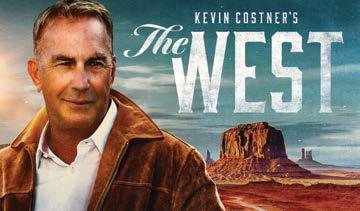
Hosted and narrated by Kevin Costner and executive produced by Doris Kearns Goodwin, the first season of this returning series will capture some of the West’s vast sweep in stand-alone episodes. Transcending clichés, it will share moving stories that combine great characters, historical context, distinguished interviewees, archival elements and limited re-creations to convey a nuanced portrait of the American West and its diverse peoples, places and events. (8 x 60 minutes)
Finally, Holy Marvels with Dennis Quaid explores fascinating sacred objects and belief systems from different cultures, sparking curiosity about history and faith. A+E Media Group is a joint venture of Disney-ABC Television Group and Hearst.
Phone: +1-212-210-1400
Email: intl.sales@aenetworks.com
Website: sales.aenetworks.com
MIPCOM Stand: C15.A 6
Main Contact: Melissa Madden

Hosted by Emmy and Golden Globe nominee Dennis Quaid, this intriguing series explores faith through coveted sacred objects. Expert interviews and recreations in each of the eight episodes illuminate belief systems via wonders like the Mayan Calendar, Noah’s Ark and The Fountain of Youth. (8 x 60 minutes)

GEORGIA O’KEEFFE:
THE BRIGHTNESS OF LIGHT
Georgia O’Keeffe: the Brightness of Light is a two-hour documentary exploring the life and art of a key figure in American modernism. O’Keeffe exploded on the New York art scene in the 1920s with her paintings of flowers, bones and the beauty of nature. In the 1970s, famously isolated in the New Mexico desert, O’Keeffe emerged as an iconic role model for women. From Academy Award-winning director Paul Wagner, the film features music by Emilie Levienaise-Farrouch, narration by Hugh Dancy and Claire Danes as the voice of Georgia O’Keeffe. (120 minutes)
APT Worldwide is a leading supplier of factual content to the global media market, including: lifestyle programs (Lucky Chow, Yoga in Practice, Christina Cooks: Back to the Cutting Board), science and nature (To the Ends of the Earth, The Piping Plovers of Moonlight Bay, Ocean Invaders, Changing Seas), history (The Cure for Hate, Peleliu: WWII’s Most Well-Preserved Battlefield, Dad’s Secret War: France 1944, Rise of the Freemen), travel (Rick Steves Iceland,

BEHIND THE WINGS
Go “behind the wings” to explore history’s iconic aerospace treasures, with access to legendary aircraft and cuttingedge aviation technology. Experience the discoveries of the James Webb Space Telescope, look back at revelations from the Apollo Space Program, see how electric vertical take-off and landing (eVTOL) aircraft are changing the future of how we move, and follow the journey of artificial intelligence in modern military aviation. (24 x 30 minutes)
Dream of Europe, Curious Traveler), documentaries (Higgins Ridge, Anahita: A Mother’s Journey), business (StartUp, Triumph of the Nerds), Art & Culture (Confluence, Rick Steves Art of Europe, the classic series The Joy of Painting with Bob Ross), and short form content (Rick Steves Art Bites). APT Worldwide works with media companies in every territory to license content across all distribution platforms (excluding theatrical), including: broadcast, streaming, VOD,

A group of young Canadian women experience the thrill of a lifetime at the coronation of Queen Elizabeth II in 1953 and gather 70 years later to relive their trip. This remarkable documentary includes archival footage of the Queen’s coronation and interviews with the women reflecting on their journey. With appearances by actor Richard E. Grant and King Charles III. (90 minutes)
educational, non-theatrical, IFE, footage and transportation. APT Worldwide is a division of American Public Television, a leading distributor of content to public television stations in the United States.
APT WORLDWIDE
Kevin McKenna Director, International Sales 1-617-338-4455
Kevin_McKenna@aptonline.org
APTWW.org
MIP Stand Number: P-1.K68

TO THE ENDS OF THE EARTH: AVIAN CHRONICLES
In the fifth episode of To the Ends of the Earth, Todd Gustafson examines the odd, charming, funny and visually stunning behaviors of birds from around the world. Highlighting a wide array of species, Avian Chronicles is a gorgeous reminder of the unique and diverse makeup of the avian community. (60 minutes)


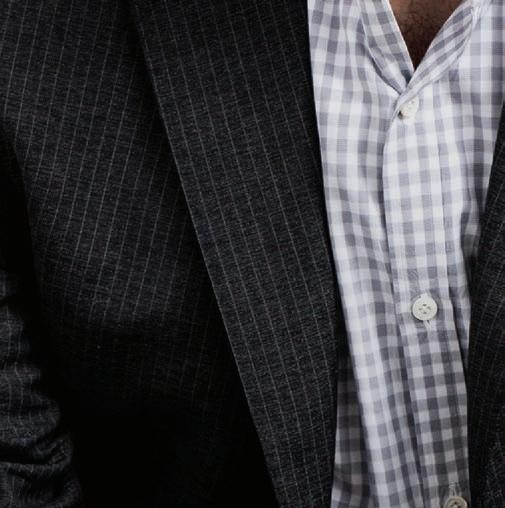

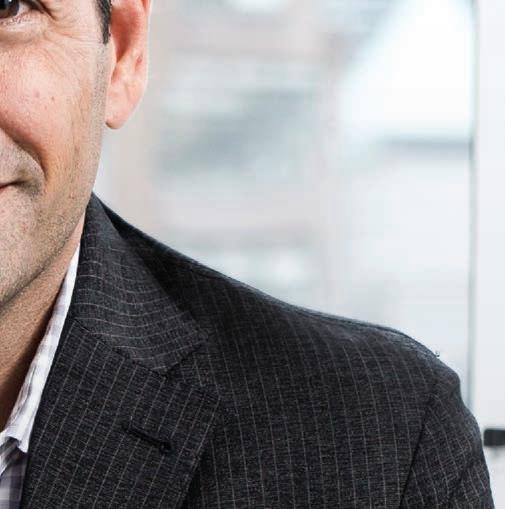







It’s no secret that the current commissioning climate has been in a cooler phase for some time. With that in mind, how would you describe the current buying strategy for A+E Networks?
Because we don’t rely on sports rights or pricey off-nets, original content is, and always has been, the lifeblood of our business. As a result, we’ve continued to mint new series every year because our ecosystem depends on it. Even through COVID, we kept the trains running fast and well. We have at least 10 unscripted series that we’ve greenlit since then that have already reached the 100-episode threshold.
Are there any networks that are more actively buying in your roster than others?
We’re always on the lookout for the best opportunities on every brand. History has a very full roster and yet we still had several new series hit this past year, including The UnBelievable with Dan Aykroyd The biggest and most fun challenge is to displace incumbents with something new and more exciting to keep the audience engaged. In terms of raw real estate, there is a bigger opportunity on Lifetime, where we’d love to find more returnable formats.
… in which A+E’s president of programming shares his take on opportunities at his networks, and how to take action in times of contraction.

By Barry Walsh
Are there any areas in terms of subject matter or approach that you’d like your nets to experiment with?
Limited series don’t really interest us — I think that’s more of a game for the SVOD players who might be trying to jolt subscriber acquisition or win awards. The ideal series for me is something that can super-serve an audience on many platforms over many years. Thankfully, we have a number of franchises that do that.
In terms of the “what are you looking for” question, I would answer two ways. One, if I had a specific idea, I would never reveal it to a reporter. Second, I recommend watching our brands. I’m a voracious fan of TV, but often I’m surprised that people who pitch us haven’t watched much of any of our programming. There’s a writer’s cliché that the best way to become a writer is to read. I think the best way to create and sell TV series to any brand is to watch
In 2020, when discussing copros and working with producers from different territories, you said you were “open for conversation about everything,” including rights. Given the current state of affairs for producers at home and abroad, are you still open to those kinds of conversations?
We always try to make the deals that make the best financial sense for the company, and sometimes that involves getting creative.
Everyone’s talking about contraction now, but few are talking about growth. As a veteran of this business who has seen various highs and lows impacting the industry over the years, where do you see growth in the business now?
It seems as if hand-wringing has become our industry’s favorite pastime. Yes, times are very challenging and the disruption can be overwhelming. But I still believe that creative innovation will lead the way.
